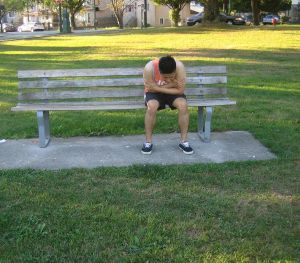Heat rash or miliaria rubra is commonly known as prickly heat. It is characterized by a rash consisting of small red bumps in the affected area. These rashes are caused due to blockage of the sweat glands which can be caused due to a number of factors such as high fever, excessive sweating or by being over bundled with clothes. It is more commonly seen in hot and humid climate and causes discomfort like itching and stinging.
Who’s At Risk?
Heat rash is more prevalent in hot and humid climate. Hence, anyone who is not used to such environment risk greater chances of getting affected by it. It is a common occurrence in infants as they are often over bundled out of concern for heat loss after birth. The occurrence of heat rash is seen among individuals of all age, race and gender. However, it is seen that Asians are affected by it to a lesser degree.
Signs and Symptoms
The signs and symptoms of heat rash are listed as follows:-
– Small red bumps all over the body. These bumps usually occur in area of the body that are covered and suffers a lot of friction. Such areas include neck, chest and body folds.
– There will be moderate to severe itching in the rash affected area. It generally stings and worsens in presence of heat.
– The individual may feel fatigued and become intolerant to heat because there is no sweating from the affected areas.
Self-Care Guidelines:
By controlling the heat and humidity, heat rash can be prevented or controlled. If the heat rash is caused due to high fever, then make sure to take tablets like ibuprofen that reduces fever. Remove any tight clothing, avoid strenuous activity and seek air conditioning. It is seen that cool compresses also help to get relieved of the discomfort. Drink a lot of fluids to keep yourself hydrated.
When to Seek Medical Care:

Under certain circumstances, a secondary infection is induced in the heat rash affected skin. This happens due to excessive scratching and heat exhaustion. There are chances of bacterial infection if there are breaks on the skin and it may need antibiotic treatment. In case you see development of pus, redness, crusting, tenderness in the affected area, seek medical help.
The symptoms of heat exhaustion are dizziness, nausea, weakness, confusion, difficulty in breathing, very high temperature, etc. The skin appears flushed and hot and there is no sweating. If heat exhaustion is not treated in time, it may lead to heat stroke. In severe circumstances, keep the person in cool conditions and apply cool compresses till medical care is not available.
Depending on the state of the heat rash, your doctor will prescribe you the appropriate treatment. In case, there is secondary bacterial skin infection, a dose of or topical antibiotics may be given. For dehydration, intravenous fluids are prescribed.
